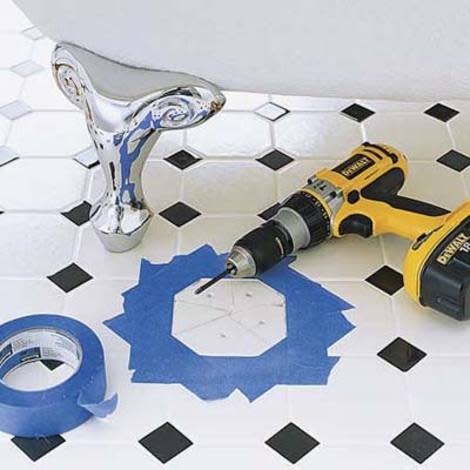Stop Procrastinating! 5 Quick DIY Fixes You Can Tackle in No Time Flat
The know-how you need to finally make that nagging fix. Let's start with a couple of easy plumbing repairs.

1. Leaky or Runny Toilets
If you're going to make your own leaky or runny toilet repairs, you're going to have to learn the anatomy of the thing. For example, it's worth knowing that a refill tube replaces water in bowl after flush. If a toilet runs intermittently, check that the tube's end is above water level in the tank. Identify more parts in How to Fix a Leaky or Runny Toilet.

2. Dripping Kitchen Faucet
"Most people will ignore a dripping faucet out of fear or ignorance," says TOH plumbing expert Richard Trethewey. If they deal with it at all, it's usually by cranking the handle so hard they risk tearing a rubber washer or cracking something and making the leak worse. If your kitchen faucet is a single-handled one like the one shown here, Richard will show you how to stop the drip in just 4 easy steps.
Got a different kind of faucet? See How to Repair a Dripping Two-Handled Stem Faucet for how to fix another common model.

3. Bubble-Marred Wallpaper
If it's less than 1 inch across and you don't feel any debris inside, such as a paint chip, you can forgo the standard procedure of slicing an X into the paper and brushing adhesive behind it. Instead, use a syringe (about $5; at paint stores) to poke a pinhole that releases the air and allows you to inject adhesive right where it's needed. To get a clean cut in vinyl paper, make a small slit with a utility knife before inserting the syringe.
Need to secure loose seams or patch punctures? Check out Wallpaper Repairs Made Easy.
MORE: 52 Cures for the Most Annoying Home Ailments

4. Silence a Rattling Door
A door that shakes and rattles when it's closed isn't resting firmly against its stop, the way it should be. For most interior doors these days, you can fix this problem by adjusting the latch plate that the door latch engages when shut. Find the little tab that sticks into the latch plate's hole, and use the tip of a screwdriver to bend that tab slightly toward the stop. Close the door. You'll know the tab is bent the right amount when the latch engages securely and the door doesn't rattle. If your latch plate has no tab, put some peel-and-stick silicone bumpers onto the side of the stop facing the door. They stop the rattling by pushing the door tighter against the plate. For more door fixes see How to Replace an Interior Door and How to Fix a Door That Sticks.

5. Replace a Broken Tile
You dropped that thing that time and that unsightly cracked tile is a constant reminder of your klutzy ways. Just be glad to have tile underfoot, because replacing a broken or chipped one is pretty simple to do. And with our pro method, you won't mar neighboring tiles in the process. See the How to Replace a Broken Tile step-by-step project for instructions that'll get you pro results.
